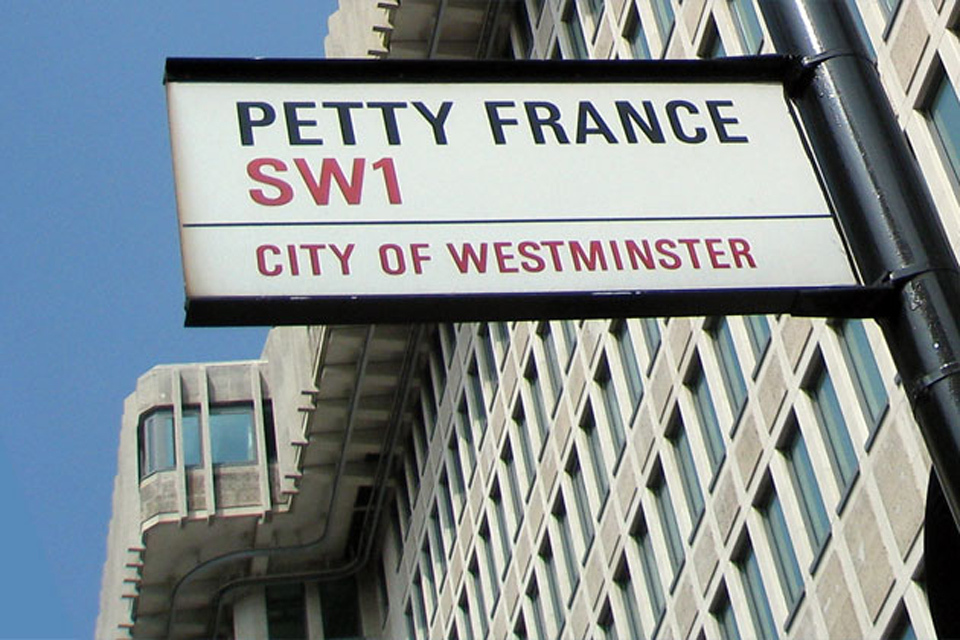The main priorities are
-
major reforms for £100 billion design sector - Government launches comprehensive consultation to modernise UK design protection and strengthen Britain’s position as a global design powerhouse
-
seeking expertise from Britain’s design community – from independent creators and luxury brands to tech firms and legal professionals, the government wants insights from across the £100 billion sector to shape future reforms
-
tackling system complexity and abuse - Proposals to streamline confusing overlapping rights, combat design theft, and provide clearer guidance for the 80,000 design businesses across the UK
-
future-proofing for digital innovation - Plans to modernise the system for new technologies, resolve post-Brexit complications, and improve access to justice for small businesses
A major Government consultation launched today by the Intellectual Property Office aims to modernise Britain’s design protection system and strengthen the UK’s position as a global design powerhouse.
Industry analysis estimates that the design sector contributes nearly £100 billion annually to the UK economy, with around 80,000 design businesses supporting nearly 2 million jobs. From the runways of London Fashion Week to British automotive engineering excellence, British design sets international trends and drives economic growth. The UK’s creative industries are global leaders. Spanning everything from traditional craftsmanship to cutting-edge digital design, British creativity helps shape the world.
Strong intellectual property protection, including design rights, creates the legal foundation that enables British designers to compete and innovate. It allows them to license their work and take action to stop others copying them without their permission.
However, to maintain this competitive edge, the UK’s design protection framework requires modernisation. The UK has a complex patchwork of overlapping rights, which can create confusion for design businesses including the small firms that make up 92% of the sector. This can leave many unclear about which protections apply to their work or how to navigate the system.
There is evidence that some applicants are registering designs for products that aren’t theirs, with limited ways to stop this abuse under current law. Brexit has also created new complexities, as designs can no longer get automatic protection in both UK and EU markets. Meanwhile, the system struggles to keep pace with digital innovation, making it harder to protect animated designs and modern interfaces.
These proposals could lead to the most significant transformation of UK design protection in decades, creating a modern framework fit for the digital age.
Main areas for potential reform
The consultation covers specific areas of potential reform including
Fighting design theft – Proposing search and examination powers to identify and reject designs that lack novelty or individual character, particularly targeting anti-competitive filings. The government is also proposing bad faith provisions to prevent dishonest applications for well-known products or designs not owned by the applicant.
Streamlining processes – Potential changes to make the system simpler, including harmonising time limits and procedures across different types of design protection, consolidating the complex patchwork of unregistered designs and providing clearer guidance that can be understood without requiring legal expertise. We are also considering introducing formal deferment provisions allowing applicants to keep designs confidential for up to 18 months. This may particularly benefit sectors with long production cycles.
Resolving post-Brexit complexities – Providing certainty for UK businesses who operate internationally. The government is exploring practical solutions to address challenges where designs can no longer gain automatic protection across UK and EU markets through single disclosure.
Strengthening enforcement and access to justice – Exploring creating a small claims court track within the Intellectual Property Enterprise Court specifically for design disputes, making enforcement more accessible and affordable for small businesses.
Modernising for the digital age – Proposals include allowing applicants to submit new file formats such as video clips and CAD files when applying for design protection. The government is also consulting on updating legal definitions to ensure future industries and technologies can benefit from design protection. Additionally, the government is considering whether designs created entirely by AI should receive protection.
The consultation runs for 12 weeks from 4 September 2025 until 27 November 2025.
The government is seeking responses from design professionals across all sectors – from independent designers and luxury brands to automotive manufacturers, digital agencies, and interior design studios. Legal professionals and other stakeholders interested in protecting creative work are also encouraged to share their views on these important reforms.
Consultation responses will help inform policy options that Ministers may take forward.
Feryal Clark MP, Minister for Intellectual Property, said
From Mini to Burberry and the London Underground map, British design is renowned worldwide for its creativity and innovation. It contributes almost £100 billion to our economy – supporting the growth which is powering this government’s Plan for Change.
These reforms will help remove barriers and make it easier for designers of all shapes and sizes to protect their creations – cementing our position as one of the world’s leading destinations for design investment and innovation.
Chris Bryant MP, Minister for the Creative Industries, said
Design is at the heart of everything we do as a creative nation. Whether it’s the chair you’re sitting on, the app on your phone, or the car you drive to work, someone has imagined it, crafted it, and brought it to life. However, protecting brilliant design ideas has become unnecessarily complex. If you’re a small business or start-up with an innovative idea, you shouldn’t need extensive legal expertise just to navigate the system.
That’s why we’re consulting on simplifying our designs framework. We want to remove the barriers that hold back creators and make protection straightforward and accessible. Because when we get this right, we’re not just supporting individual designers – we’re building the foundation for the next wave of British innovation that will drive growth right across the country.
Adam Williams, CEO of the Intellectual Property Office, said
The UK’s design sector contributes nearly £100 billion to our economy annually, yet too many creators – particularly smaller businesses and independent designers – find our current system confusing and difficult to navigate. In a rapidly evolving global marketplace, we need a framework that’s not just fit for today, but ready for tomorrow.
This comprehensive consultation demonstrates our commitment to building a modern, accessible system that protects creativity and innovation while preventing anti-competitive abuse. Whether you’re an independent designer with a breakthrough idea or major manufacturer protecting established products, our design system should work for you. I encourage everyone across the design community to share their views and insights and help shape the future of UK design protection.
Reaction to today’s announcement
Minnie Moll, CEO of the Design Council, said
The Design Council strongly welcomes the Government’s ambition to transform the UK’s design protection system, modernising and simplifying it to ensure it meets the needs of all those in the design economy. This consultation represents the kind of forward-thinking approach our sector values – one that recognises design’s vital contribution to the economy and the opportunities to enhance creativity and innovation.
The government’s ambition to streamline and modernise the system will benefit our community. Through our network of 250 Design Council Experts across every discipline, we’ll ensure the consultation benefits from the practical insights of designers, bringing real-world experience to inform these important changes.
Dan Guthrie, Director General of the Alliance for Intellectual Property, said
Intellectual Property protection is vital for the design community, the majority of which are micro and small businesses who don’t have the resource to navigate an often-complex system of rights. We welcome the Government’s consultation and hope any outcome provides a robust and accessible legal framework for them to defend their creativity.
Dids Macdonald OBE, Chair and Co-founder of Anti Copying in Design, said
Effective intellectual property protection is critical to the design economy, particularly as most of the 1.97 million people in design and design skills are lone, micro, or small, creative entrepreneurs with limited resources to navigate complex, costly IP rights systems. Evidence from the 2022 Designs Framework Call for Views highlighted this imbalance, reinforcing the need for reform.
We welcome the Government’s recognition and the Intellectual Property Office’s engagement with ACID since the last major review in 2011. A stronger, more accessible framework with effective deterrents is essential to tackle repeated ‘David & Goliath’ infringement. Elevating design rights from ‘poor cousin’ or a ‘Cinderella right’ to equal standing within IP law, and treating infringement as theft, would be a vital first step.
President of The Chartered Institute of Trade Mark Attorneys (CITMA) said
Our members know firsthand the benefits and potential of design rights. They also know how difficult and costly enforcing those rights has become often complicated by the patchwork case law around copyright protection which has been used to plug the gaps. The design system is therefore ripe for reform.
We welcome the Government’s consultation on modernisation of the UK’s design protection system and our extensive membership of IP professionals look forward to contributing on proposed changes and improvements to the system. Together with the IPO and peer stakeholders we look forward to helping shape a clear and joined up design environment for the UK.
Bobby Mukherjee, President of the Chartered Institute of Patent Attorneys (CIPA), said
CIPA welcomes the launch of the government’s major consultation to modernise the UK designs regime. It is important that our members participate in this open, evidence-led consultation and present their practical views on the proposals, backed up by the facts and evidence. We therefore look forward to being a key partner of the government in designing the future.
Sarah Vaughan, President of the IP Federation, said
The IP Federation welcomes the opportunity to assist the UK Government in reviewing the legal framework for protecting designs. The protection of designs is a vital component for fostering innovation, and the IP Federation believes the review affords the Government a timely opportunity to simplify and modernise design law whilst ensuring the system remains robust, balanced and cost-effective.
John Coldham, Partner and Head of Brands and Designs at law firm Gowling WLG said
This is the first comprehensive review of the UK’s design law regime in well over a decade, and we are delighted on behalf of the designers and design-led businesses we represent that it is happening. Design law works well but factors such as Brexit, technological innovation and the need for it to be fit for purpose in the modern world make this review timely and important. I encourage all designers and design-led businesses to take a detailed look at the proposals and comment accordingly.
Paul Alger MBE, International Business Director, UK Fashion and Textile Association, said
Design protection is vital for the UK’s creative fashion and textiles sector, particularly as new technologies like AI create fresh challenges for protecting creative work.
The UK Fashion & Textile Association welcomes this consultation and is committed to working with the IPO to ensure robust design rights and effective protection mechanisms that support UK creatives and help build a world-class design rights framework.
Ben Massey, CEO of the National Association of Jewellers, said
The jewellery and allied trades sector is built on creativity and original design, and we welcome this consultation to strengthen design protection. The UK Jewellery, Silverware and Allied Crafts Roundtable welcomes government exploring ways to better support small jewellers and designers in protecting their unique creations.
From intricate hand-carved pieces to cutting-edge CAD systems, our industry thrives on craftsmanship and original thinking. Strong, accessible design protection helps our creative community flourish with confidence. I encourage all jewellers, silversmiths and allied crafts professionals to share their views and help shape the future of design protection for our industry.
Angela Bardino, President of the British Institute of Interior Design, said
The British Institute of Interior Design supports the government’s review of design protection laws and sees this as a positive opportunity to modernise the system for our industry. Interior designers create original furniture, lighting, textiles, and other unique elements as part of their design that need effective protection. We’re encouraged by the potential to simplify the current framework, particularly for smaller practices.
We encourage all interior designers to participate in this consultation to help shape improved design protection for our sector.
Helen Brocklebank, CEO of Walpole, said
A robust intellectual property framework is a key enabler of UK luxury’s £81bn annual value to the economy, supporting jobs, attracting investment and driving growth.
Luxury brands rely on design rights to protect unique visual aspects of their products. It is essential to protect and enhance these IP rights to safeguard the UK’s position as the best place in the world to operate a luxury business, so I would urge Walpole members and all luxury brands to engage with this consultation.
Chris Williamson, President of the Royal Institute of British Architects, said
We welcome the government’s consultation on strengthening design protections and would encourage all RIBA members to respond.
British architecture and architects are world-renowned and a global success story. Architecture serves as one of the most visible expressions of our country’s creativity and cultural significance and is a key contributor to the economy. But to help protect and grow our architecture sector both at home and through exports abroad, we must ensure that creativity, intellectual property and designs are properly protected.
RIBA looks forward to working with the government to ensure that design protection supports our members’ work.
Helen Dickinson OBE, CEO of the British Retail Consortium, said
The British Retail Consortium welcomes the Government’s consultation on modernising the UK’s design protection system. Design is fundamental to retail success – from innovative packaging and store layouts to digital interfaces that enhance the customer experience. Our retail members depend on effective design protection to differentiate their products and drive innovation across both physical and digital channels.
We encourage all retailers to actively engage with this consultation to ensure their voices are heard and their needs are properly understood as the Government considers the future of UK design protection.






